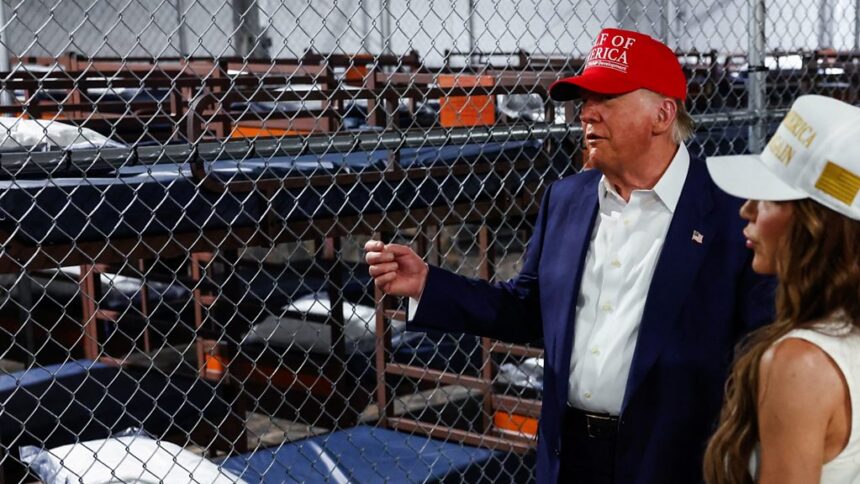Trump Visits ‘Alligator Alcatraz’ Immigrant Detention Center in Florida Everglades
In an effort to enhance his administration’s stance on illegal immigration, President Donald Trump recently toured the newly established detention facility, humorously dubbed “Alligator Alcatraz,” located in the Everglades of Florida. This center is projected to accommodate up to 3,000 migrants as part of the ongoing crackdown against unlawful immigration practices.
During his visit, President Trump made a bold statement, asserting that the facility would soon house some of “the most menacing migrants and the most vicious people on the planet.” He also emphasized that the presence of local wildlife, including alligators, crocodiles, and pythons, would act as a natural deterrent against any attempts at escape.
Local Opposition and Environmental Concerns
Despite the government’s enthusiasm about the new facility, it has not been met without criticism. Various state lawmakers, local officials, environmental advocates, and nearby residents have expressed opposition to the center’s construction, citing potential risks to the region’s fragile ecosystem.
Trump acknowledged the treacherous nature of the surrounding wetlands during the tour, stating, “We’re surrounded by miles of treacherous swampland, and the only way out is really deportation.” He warned that anyone attempting to flee would face significant law enforcement measures, humorously referring to the local alligators as the “cops.”
Facility Details and Future Plans
The new detention center is set to officially begin operations with its first detainees anticipated to arrive shortly. In addition to this facility, state officials plan to construct a second center near Jacksonville, designed to house an additional 2,000 individuals.
| Facility Name | Location | Capacity | Annual Cost |
|---|---|---|---|
| Alligator Alcatraz | Florida Everglades | 3,000 | $450 million |
| Future Jacksonville Center | Near Jacksonville, FL | 2,000 | TBD |
State, Federal Collaboration and Immigration Policy
Florida Governor Ron DeSantis articulated his intention to deploy members of the National Guard Judge Advocate Corps to serve as immigration judges, an initiative aimed at expediting the removal process for detainees. Trump noted that the detention center could serve as a prototype for similar facilities across the nation, working closely with Republican-led states such as Louisiana to identify additional locations.
Moreover, both Trump and Homeland Security Secretary Kristi Noem indicated their belief that the facility could motivate undocumented migrants to voluntarily depart the country. However, Noem acknowledged uncertainty about the exact number of migrants who may have self-deported, as certain individuals left without using formal processes.
Despite the plans, local residents, such as Betty Osceola from the Miccosukee Native American community, voiced apprehensions regarding the potential for the temporary facility to transition into a long-term installation, stressing environmental impacts as their primary concern. Experts warn that damage to the area’s ecosystems could negate significant restoration efforts in the Everglades, a region boasting endangered species like the Florida panther and West Indian manatee.
As the federal government intensifies its immigration enforcement measures, the establishment of this detention center serves as both a symbolic and practical component of President Trump’s ongoing campaign to reshape U.S. immigration policy.






